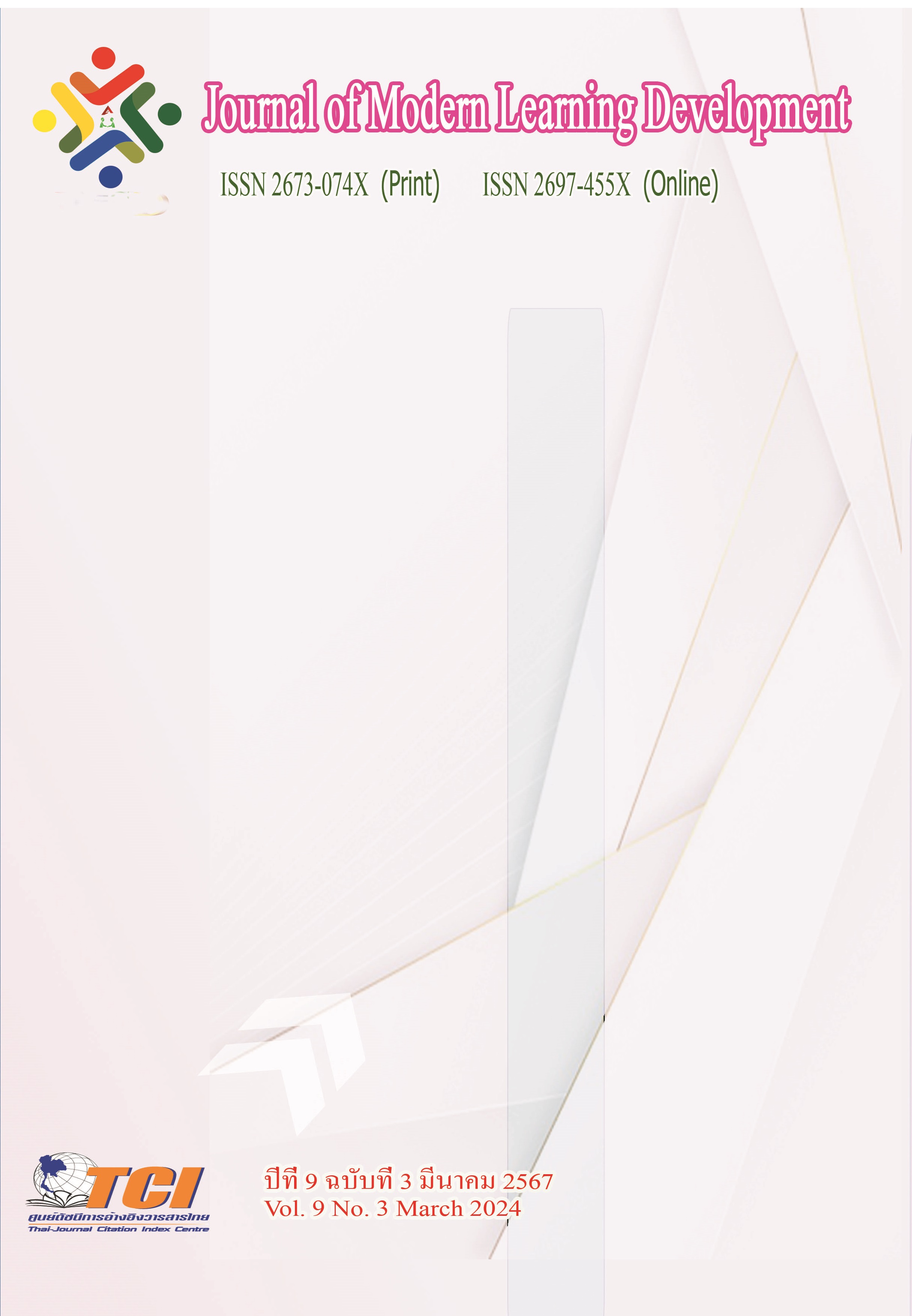The Literatures of Ballet Teaching in China
Main Article Content
บทคัดย่อ
In learning ballet, knowledge of music theory is an indispensable part. Whether the students control the music well or not depends on whether the students have an understanding of the rhythm of music. Offering music theory courses in learning ballet is conducive to cultivating students' sense of rhythm and perception of music, giving students motivation and stimulating their emotions. Good music can bring students the effect of setting off the classroom atmosphere. This article presented the literature of ballet teaching in China.
Article Details
เอกสารอ้างอิง
Cai. L. (2009). Comparison of Aesthetic Differences between Chinese Classical Dance and Western Classical Ballet. Shaanxi Normal University.
Cao, H. B. (2007). Discussion on the Importance of Teaching Methods in the Basic Training of Classical Ballet. China Outside School Education.
Cao, X. T. (2016). Analysis of the problems and countermeasures of piano accompaniment in ballet basic training courses in colleges and universities, (19), 172.
Chen, M. L. (2003). On the role of piano accompaniment in the training of basic dance skill. Journal of Xinghai Conservatory of Music.
Gao, J. (2016). Ballet on the keyboard - exploration and practice of ballet piano accompaniment. Shenyang Conservatory of Music.
Golovkina, Z. (1994). How to Arrange a Classical Ballet Class—A Discussion on the Principles of Teaching Method. Journal of Beijing Dance Academy. (02).
Han, X. J. (2017). Piano accompaniment in the teaching of basic ballet skills. The Voice of the Yellow River, (11), 97.
He, X. (2012). Analysis of the relationship between modern dance and ballet. China Science and Education Innovation Guide, (32), 211.
Huang, L., & Ye, R. (1992). The Mass of Modern Ballet in the 20th Century. Shanghai Music Publishing House.
Qiu, S. (2012). On the characteristics of beauty in the ballet "The Red Detachment of Women". Literary World, (10), 301-303.
Sun. W. (2012). On the Five Core Elements of Classical Ballet Training. Journal of Beijing Dance Academy, (04)
Wang, Z. D. (2010). Analysis of Piano Accompaniment of Ballet Dance. Shaoguan University.
Wu, J. (2003). Selection of piano accompaniment in dance teaching. Qilu Yiyuan, (3), 61-62.
Wu, X. H. (2011). Talking about the Philosophy in the Similarities and Differences of Chinese and Western Ballets. Journal of Huaihai Institute of Technology, (24), 1-2.
Xiong, Y. (2006). Elegant art appreciation should pay equal attention to content and form. On the appreciation of ballet works in dance appreciation class. Journal of Kangding Normal College for Nationalities, (04), 90-93.
Zhang, F. (2006). Talking about how piano accompaniment teachers can improve the classroom teaching effect of dance teaching. Journal of Liaoning Higher Vocational College, (2), 96-97.
Zhang, J. (2000). Musician's Soul of Dance-A Probe into the Art of Dance Piano Accompaniment. Jiao Ah, (2), 43-46.
Zhang, Y. (2016). Characteristics and Requirements of Piano Accompaniment in Basic Ballet Training Course, Contemporary Music, (15), 61-63.
Zhang, Y. P. (2007). Basic Teaching Method of Classical Ballet. Shanghai. Shanghai Music Publishing House.
Zhao, W. H. (2013). The training characteristics of the basic homework of classical ballet—a dance posture training, Art Education, (03).
Zhu, L. (2001). Outline of Western Ballet History. Shanghai. Shanghai Music Publishing House.


